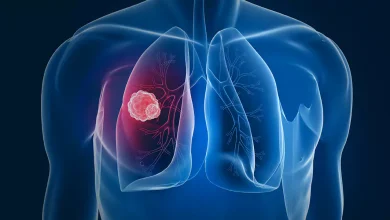All about Eales Disease

What is Eales Disease?
Also known as Idiopathic obliterative vasculopathy and Idiopathic recurrent vitreal hemorrhage, Eales disease is a rare eye and vision disorder that occurs as inflammation and white haze around the outercoat of the veins in the retina. Young males are most prone to this disorder and it affects both eyes. Eales disease generally makes the vision blurred as it seeps out the vitreous, the clear jelly that fills the eyeball behind the lens of the eye. It may also lead to vision loss and is characteristically caused by bilateral (often), recurrent, vitreous hemorrhage and its sequelae.
What are the Types of Eales Disease?
There are no particular types of eales disease but it’s classified into various stages according to the severity including:
-Stage I: In this stage, there will be mild periphlebitis. It affects the peripheral small retinal capillaries and is detected by ophthalmoscopy.
-Stage II: In the second stage, the large veins get affected, and perivasculitis is present in large areas of the retina.
-Stage III: Neovascularisation with lots of vitreous and retinal hemorrhages.
-Stage IV: In the fourth and last stage, there are recurring vitreous hemorrhages. Tractional retinal detachment may be there along with vitreous hemorrhage.

What are the Symptoms of Eales Disease?
Eales disease mostly affects young men and symptoms may start developing from the adolescent years and symptoms vary from person to person. There may be more symptoms in some people than others and can range from mild to severe. Symptoms of eales disease may include:
– Headache: You may feel pain in various parts of the brain and it’s not limited to the area of distribution of any nerve.
– Retinal Vasculitis: There may be inflammation of retinal blood vessels as indicated by perivascular sheathing or cuffing, vascular leakage, or blockage
– Vitreous Hemorrhage: There may be bleeding in the vitreous compartment of the eye.
– Abnormality of the Nervous System: The nervous system may function abnormally
– Anterior Uveitis: There can be inflammation of the uveal tract in which the prime site of inflammation is the front chamber.
– Constipation: Infrequent or difficulty in passing stool
– Nosebleeding: The nose may bleed mostly the hemorrhage located in the nose.
– Glaucoma: Glaucoma means the loss of retinal ganglion cells in a characteristic motif of optic neuropathy generally linked with augmented intraocular pressure.
– Iris Neovascularization: You may experience the growth of vessels on the surface of the iris
– Optic disc pallor: A pale yellow discoloration in the area of the optic nerve head in the retina known as the optic disk
– Photopsia: There may be perceived flashes of light.
– Reduced visual acuity: You may experience blurred vision and poor visual acuity
– Retinal Thinning: The anteroposterior thickness of the retina may reduce.
– Tractional retinal detachment: A type of retinal detachment may occur because of an amalgamation of shrinking retinal membranes, abnormal vitreoretinal adhesions, and vitreous changes.
What are the Causes of Eales Disease?
The exact cause of Eales Disease is still not known. This disorder seems to arise spontaneously because no accelerating reasons like injury, infection, or heredity seem to be involved. Some researchers believe that exposure to tuberculosis and hypersensitivity to tuberculoprotein may be related to this condition. The tuberculosis bacteria known as Mycobacterium tuberculosis is linked to eales disease because of the presence of DNA of M.tuberculosis and RGNTM in the vitreous humor of patients having Eales disease. Studies have shown 70% of samples of the epiretinal membrane tested positive for one or more species of Mycobacteria and there has been a statistically significant association between the Eales disease and Mycobacteria.
What are the Risk Factors of Eales Disease?
Vitreous haemorrhage is the main reason for the reduction of vision in Eales’ disease. The first episode of vitreous haemorrhage generally clears but recurrent vitreous haemorrhages may result in the formation of traction bands and membranes in the vitreous and subsequent complications
What are the Complications of Eales disease?
Complications of Eales disease include:
- Blindness
- Recurrent vitreous hemorrhage.
- Neovascular glaucoma.
- Retinal detachment.
- Macular edema.
- Epiretinal membrane.
- Choroidal neovascularization.
Complications may arise after the treatment also that includes neovascularization, vitreous hemorrhage, retinal detachment, epiretinal membrane, glaucoma and cataract
How Eales Disease is Diagnosed?
Diagnose procedures of eales disease include:
-Fluorescein angiography (FA): This test is done to detect leakage of dye surrounding veins indicates active inflammation. Venous staining without leakage means sclerosed vessels or resolved inflammation.
-Wide-field FA: This test helps in the assessment of peripheral areas with better quality and lets peripheral observation of the above findings.
-Ultrasonography: It permts detection of retinal detachment when vitreous hemorrhage obscures view of the fundus.
– Optical Coherence Tomography (OCT): Eales’ disease mostly involves the peripheral retina, and OCT helps to observe macular involvement.
– OCT-angiography (OCT-A): It helps to check neovascularization depending on location of involvement.
What are the Treatment Options Available for Eales Disease?
The treatment of Eales disease is based on the severity of the condition. General treatment options for eales disease include:
– Corticosteroids: Corticosteroids are a type of anti-inflammatory drug which is given to people with eales disease to ease the symptoms especially inflammation.
– Anti-Vascular Endothelial Growth Factor (Anti-VEGF): Timely regression of neovascularization is vital to avert vitreous hemorrhage and tractional retinal detachment that needs vitreoretinal surgery. Bevacizumab has been shown to be effective in regressing neovascularization and mild hemorrhage secondary to Eales disease, if given every 4 weeks, hence fastening the procedure of resolution of dense vitreous hemorrhage or decrease the requirement for vitrectomy.
– Anti-Tuberculosis Treatment: Mycobacterium tuberculosis, a bacteria that causes tuberculosis has connection to the occurance of eales disease and that’s why anti-tuberculosis treatment is considered sometimes during the treatment of eales disease.
– Photocoagulation: Photocoagulation is the mainstay of treatment in the proliferative stage. Photocoagulation is benefecial to treat this disease in stages II and III (proliferative stage with active new vessels) of Eales’ disease. Stage I disease does not reqquired photocoagulation and stage IV (proliferative stage with massive vitreous haemorrhage or traction retinal detachment) were too advanced to use photocoagulation monotherapy.
– Surgery: Surgery is sometimes reuquired to treat vitreous haemorrhage, tractional retinal detachment that posses a danger to the macula, multiple vitreous membranes with or without tractional retinal detachment, and combined tractional and rhegmatogenous retinal detachment. Surgery can improve the visual acuity in majority of patients. Endolaser treatment may be used at the time of surgery.
Living with Eales Disease
Eales disease directly effects your vision and it may effect your day to day life. The symptoms of ealse disease varies from mild to severe and in some cases, it may leave you blind also. It will hinder your normal life as you may get problems in your eyesight as it causes blurred and unclear vision. With proper treatment, the the symptoms of Eales’ disease can be cured. The main reason of visual loss is recurrent vitreous hemorrhages. Complications of neovascularization, such as retinal detachment and neovascular glaucoma, may lead to significant vision loss, though it is rare.
Whom to Consult?
If you notice symptoms of ealse disease, mostly importantly blurred vision then immediately consult your doctor who may further recomend you to an eye specialist. An eye specialist will diagnose your symptoms and check whether you have ealse disease or any other vision related disorder. After confirming your disease further treatment will begin.




